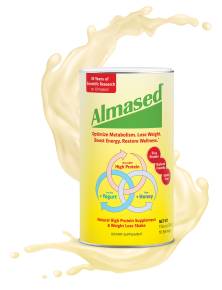The plastic component bisphenol A (BPA) has been in the headlines nonstop as scientists, health experts and consumers press for a federal ban on food packaging made with this synthetic estrogen, shown to leach readily into infant formula, beverages and canned food. But most Americans are probably unaware that they are regularly exposed to the same endocrine-disrupting chemical in cash register receipts.
Two-fifths of the paper receipts tested by a major laboratory commissioned by Environmental Working Group were on heat-activated paper that was between 0.8 to nearly 3 percent pure BPA by weight. Wipe tests conducted with a damp laboratory paper easily picked up a portion of the receipts' BPA coating, indicating that the chemical would likely stick to the skin of anyone who handled them. The receipts came from major retailers, grocery stores, convenience stores, gas stations, fast-food restaurants, post offices and automatic teller machines (ATMs).
Major retailers using BPA-containing receipts in at least some outlets included McDonald's, CVS, KFC, Whole Foods, Walmart, Safeway and the U.S. Postal Service. Receipts from some major chains, including Target, Starbucks and Bank of America ATMs, issued receipts that were BPA-free or contained only trace amounts.
Scientists have not determined how much of a receipt's BPA coating can transfer to the skin and from there into the body. Possibilities being explored include:
- Oral exposure -- BPA moves from receipts onto fingers and then onto food and into the mouth.
- Dermal exposure -- BPA from receipts is directly absorbed through the skin into the body.
A study published July 11 by Swiss scientists found that BPA transfers readily from receipts to skin and can penetrate the skin to such a depth that it cannot be washed off (Biedermann 2010). This raises the possibility that the chemical infiltrates the skin's lower layers to enter the bloodstream directly. BPA has also been shown to penetrate skin in laboratory studies (Kaddar 2008).
EWG collected 36 receipts and commissioned the University of Missouri Division of Biological Sciences laboratory to investigate their BPA content. This laboratory is considered one of the world's foremost research facilities in its capability to detect environmentally relevant BPA concentrations.
The Missouri scientists found that the total mass of BPA on a receipt is 250 to 1,000 times greater than the amount of BPA typically found in a can of food or a can of baby formula, or that which leaches from a BPA-based plastic baby bottle into its contents. These data should not be interpreted to suggest that policymakers shift their focus from BPA contamination of food, which is widespread, to receipts. BPA exposure from food sources is ubiquitous and should remain the first priority of U.S. policymakers. However, a significant portion of the public may also be exposed to BPA by handling receipts. Since many retailers do not use BPA-laden thermal paper, this particular route of exposure is easy to correct.
Biomonitoring surveys by the federal Centers for Disease Control and Prevention have found BPA in the bodies of 93 percent of Americans over age 6. EWG analysis of CDC data has found that people who reported working in retail industries had 30 percent more BPA in their bodies than the average U.S. adult, and 34 percent more BPA than other workers. (CDC 2004). As of May 2009, 1 in 17 working Americans -- 7 million people -- were employed as retail salespersons and cashiers, according to the Bureau of Labor Statistics.
EWG's biomonitoring study of minority newborns, published last December, found BPA in 9 of 10 samples, marking the first detections of the chemical in the cord blood of U.S. infants. EWG has published a Safe Baby Bottle and Formula Guide to help parents of infants avoid BPA and other harmful substances during this critical window of development.
In animal tests, scientists have produced evidence that BPA can induce abnormal reproductive system development, diminished intellectual capacity and behavioral abnormalities and can set the stage for other serious conditions, such as reproductive system cancer, obesity, diabetes, early puberty, resistance to chemotherapy, asthma and cardiovascular system disorders. It has caused epigenetic changes, meaning alterations in the way genes switch off and on and genetic changes that can be passed on to the next generations.
Frequent exposures to relatively large amounts of BPA in receipts are an obvious concern to every shopper, but even more so to the legions of people who staff cash registers and bag groceries at tens of thousands of retailers across the country. These workers handle BPA-loaded receipts hundreds of times a day, with as yet unknown consequences for their health (Biedermann et al 2010). According to the U.S. Department of Labor’s Bureau of Labor Statistics, as of May 2009, the two largest U.S. occupations were “retail salespersons” and “cashiers,” with more than 7 million Americans in those jobs.
Retail workers carry an average of 30 percent more BPA in their bodies than other adults, It is unclear how much BPA-coated receipts contribute to people's total exposure to the ubiquitous plastics chemical. What is certain, however, is that since many retail outlets already use BPA-free paper for their receipts, this is one source of contamination that could easily be eliminated completely.
Thermal paper is widely used for point-of-sale receipts, prescription labels, airline tickets and lottery tickets. Thermal printers use paper that is coated with a dye and developer (BPA or an alternative chemical). Heat from the thermal printing head triggers a reaction between the dye and developer, allowing the black print to appear.
In an effort to quantify how much BPA would transfer to a person’s hand, the laboratory performed wipe tests on four BPA-laden receipts. In all four cases, BPA transferred from the receipts to the wipes. An average of 2.4 percent of the receipts’ total BPA content wiped off, suggesting that a person who handled receipts would be exposed to some BPA in the thermal paper. There have been no published studies of BPA residues inside pockets, purses and wallets, on wet produce in grocery bags or on the hands of people after they crumpled and discarded a receipt.
Since 60 percent of the receipts EWG collected did not have significant levels of BPA, it is apparent that many retailers are using alternatives. The leading U.S. thermal paper maker, Wisconsin-based Appleton Papers Inc., no longer incorporates BPA in any of its thermal papers (Raloff 2009). Reacting to concerns about the toxicity of BPA, the Japan Paper Association began to halt the use of BPA in 1998, completing the phase-out by 2003 (AIST 2007). EWG's analysis of three receipts collected in Japan at KFC, McDonald's and Starbucks found only trace amounts of BPA. In addition, 11 of 13 U.S.-based retailers whose receipts EWG tested used non-BPA paper in at least one outlet.
The U.S. Environmental Protection Agency (EPA) has initiated a program to evaluate the safety and availability of alternatives to BPA in thermal paper (EPA 2010).
EWG urges retailers to use BPA-free paper and to consider paperless options such as emailed electronic receipts. These measures could greatly reduce the volume of BPA disseminated by the retail industry and save paper in the bargain. Retailers should make public the identity of any chemicals used in the alternative they select. Very little information is publicly available on the now-common BPA alternatives for thermal receipts.
Tips to Reduce Exposure to BPA in Receipts
- Minimize receipt collection by declining receipts at gas pumps, ATMs and other machines when possible.
- Store receipts separately in an envelope in a wallet or purse.
- Never give a child a receipt to hold or play with.
- After handling a receipt, wash hands before preparing and eating food (a universally recommended practice even for those who have not handled receipts).
- Do not use alcohol-based hand cleaners after handling receipts. A recent study showed that these products can increase the skin's BPA absorption (Biedermann 2010).
- Take advantage of store services that email or archive paperless purchase records.
- Do not recycle receipts and other thermal paper. BPA residues from receipts will contaminate recycled paper.
- If you are unsure, check whether paper is thermally treated by rubbing it with a coin. Thermal paper discolors with the friction; conventional paper does not.
Methodology and Findings
EWG collected 36 receipts from retailers in seven states and the District of Columbia:
- Ten national retail and service chains, including Walmart, Chevron and McDonald's;
- Three government establishments - the U.S. Postal Service and the cafeterias in the U.S. House of Representatives and Senate; and
- One local supermarket in Colorado.
We contracted with the analytical laboratory at the University of Missouri-Columbia's Division of Biological Sciences to perform the analysis. The laboratory weighed, measured and photographed the receipts, dissolved them in an alcohol, then analyzed them for BPA using a sensitive, standard BPA test method (High-Performance Liquid Chromatography (HPLC) with CoulArray detection).




